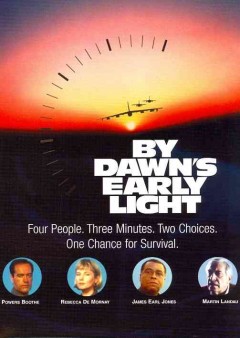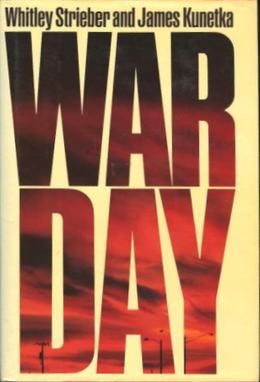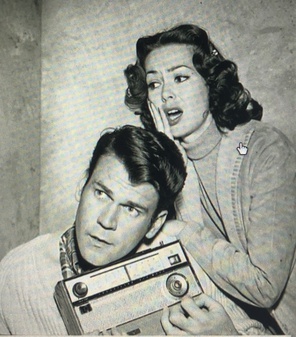Plot
The novel starts in early December of an unspecified year in the early 1960s; the Soviet Union has just launched Sputnik 23. [n 1] Tensions have been escalating for two years between the United States and the Soviet Union for dominance in the Middle East and in the Mediterranean Sea. The Soviets are menacing Turkey from three sides through their proxies in Egypt, Syria and Iraq in order to gain control of the Bosporus and give free passage between the Black Sea and the Mediterranean to their large Mediterranean naval fleet. To counteract the Soviet threat, the United States established a military presence in Lebanon and is providing aid to their Turkish and Israeli allies. Meanwhile, the Soviets gained a temporary space supremacy through the launch of a fleet of militarized Sputniks; moreover, they are aware that, within three or four years, the United States will cover the gap. Intelligence from a Soviet officer who defected in Berlin provided information about a Soviet war plan involving a sudden, overwhelming nuclear first strike on US and NATO military and civilian targets, in order to minimize retaliation and to ensure that the Soviet Union becomes the leading world power. According to the leaked war plan, the Soviet leadership considers acceptable the loss of 20 to 30 million of their own civilian population due to an anticipated retaliatory strike by NATO.
Randy Bragg, a failed political candidate and an attorney who occasionally practices law, lives an otherwise aimless life in the small Central Florida town of Fort Repose. The younger bachelor son of a prominent local family, his ancestors founded Fort Repose in the 1800s. [3] Randy's older brother, Colonel Mark Bragg, a US Air Force intelligence officer at Strategic Air Command (SAC) headquarters at Offutt Air Force Base in Omaha, Nebraska, sends a telegram to Randy ending in the words, "Alas, Babylon", a pre-established code between the brothers to warn of imminent disaster. Shortly thereafter, Mark flies his family down to Orlando in order to stay with Randy at Fort Repose for their protection while Mark remains at SAC headquarters. [3]
Soon afterwards, a carrier-based US Navy fighter pilot, attempting to intercept a Soviet plane over the Mediterranean, inadvertently destroys an ammunition depot at a large Soviet submarine base in Latakia, Syria. The explosion is mistaken for a large-scale US air assault on the military facility and, by the following day, the Soviet Union retaliates with its planned full-scale nuclear strike against the United States and its allies. With Mark as a witness, US intercontinental ballistic missiles are launched at the Soviet Union in retaliation. Randy and his guests awake to the shaking from the nuclear missile attacks on nearby military bases such as McCoy Air Force Base in Orlando and Naval Air Station Sanford; one explosion temporarily blinds Peyton, Randy's niece. The residents of Fort Repose later observe other mushroom clouds to the southwest and northeast, implying that MacDill Air Force Base and the city of Tampa as well as the city of Jacksonville and its multiple US naval installations have also been destroyed. [4]
Following what is simply referred to as "The Day," Fort Repose descends into chaos: tourists are trapped in their hotels, communication lines fail, the CONELRAD radio system barely operates, convicts escape from prisons, and a run on the banks makes currency worthless. In the weeks and months after the attack, sporadic news gathered through an old but still-functioning vacuum tube radio receiver show that many major cities of the US are in ruins and vast regions of the Continental United States are labeled by the government as off-limits "contaminated zones." Because of the numerous US Air Force and US Navy installations from one end of the state to the other that were struck during the Soviet attack, Florida is among the contaminated areas, leaving the stranded survivors of Fort Repose without hope of immediate assistance. Most of the US government has been eliminated, with the US presidency defaulting to Josephine Vanbruuker-Brown, the former Secretary of Health, Education and Welfare who is believed to be leading the nation from a location in Colorado. [4]
Other international broadcasts, heard over the shortwave radio of Randy's neighbor, retired Navy Rear Admiral Sam Hazzard, [3] reveal that Western Europe was badly hit by Soviet missiles as well, mentioning a dire situation in southern France. Soviet leadership was eliminated by the US retaliation and the Soviet capital was moved to Central Asia, but war still rages for months after the attack, although it is fought mostly between the remnants of the US Air Force and scattered Soviet Navy nuclear submarines.
A Korean War veteran still serving as a US Army Reserve infantry officer before the Soviet attack, Randy learns in a radio dispatch by President Vanbruuker-Brown that she has directed any surviving active duty or reserve US military officers to form local militias to keep the peace domestically. [4] This formally empowers Randy as the local authority under the current emergency situation. He then organizes a community self-defense force against bandits and tries to rid the community of radioactive jewelry brought into Fort Repose from the radioactive ruins of Miami. The search for alternative food sources is also prominent in the months following the attack, leading to the launch of a rag-tag fleet of fishing boats to sift the surrounding lakes, rivers and swamps for fish and to a desperate search for much-needed salt.
The following year, an Air Force helicopter arrives at Fort Repose. The crew assesses the status of the residents and the local environment, explaining that the area around Fort Repose is perhaps the largest patch of non-contaminated soil in Florida and that, after everything they have suffered, the survivors of Fort Repose managed to fare better than many other places in the US. Randy also learns that his brother, Mark, most likely died when Omaha and Offutt Air Force Base were destroyed by multiple Soviet nuclear missile strikes. When the crew of the helicopter offer to evacuate the residents out of Florida, the residents choose to stay.
It is eventually revealed that the United States formally won the war, but at a tremendous cost: the country lost almost 75% of its population. (Fewer than 45 million survivors are estimated overall; the population of the US in the early 1960s had been approximately 180 million.) As well, the country was lost most of its military, its infrastructure and most of its natural resources -- ironically, the US government is planning to use the large stockpiles of military-grade uranium and plutonium left from the war to power the surviving towns and cities with nuclear reactors. The US is now receiving food, fuel and medicine aid from third-world countries such as Thailand, Indonesia and Venezuela. According to a radio broadcast, the "Three Greats," India, China and Japan, have taken the role of world leading powers in place of US and the Soviet Union. The book ends by saying that things will not return to normal for 1,000 years and that Randy "...turned to face the thousand-year night."
















